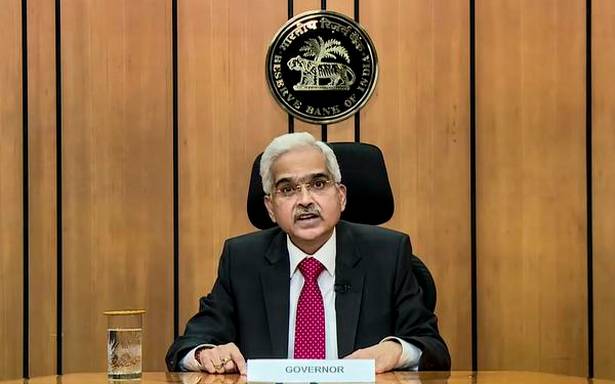The marginal standing facility (MSF) rate and the bank rate remain unchanged at 4.25%, the reverse repo rate stays at 3.35%
The Monetary Policy Committee (MPC) of the Reserve Bank of India (RBI), based on an assessment of the macroeconomic situation and outlook, on Wednesday voted unanimously to maintain status quo with regard to the policy repo rate, and by a majority of 5 to 1 decided to retain the accommodative policy stance.
“Consequently, the policy repo rate remains unchanged at 4%, and the stance remains accommodative as long as necessary to revive and sustain growth on a durable basis and continue to mitigate the impact of COVID-19 on the economy, while ensuring that inflation remains within the target going forward,” RBI governor Shaktikanta Das said in his statement after the meeting.
The marginal standing facility (MSF) rate and the bank rate remain unchanged at 4.25%. The reverse repo rate also remains unchanged at 3.35%.
On the MPC’s rationale for maintaining status quo on the policy rate and the stance, he said, “The recovery of aggregate demand hinges on private investment, which is still lagging. The MPC regarded the accentuation of headwinds emanating from global developments as the main risk to the domestic outlook, which is now somewhat clouded by the Omicron variant of COVID-19.
“Moreover, given the slack in the economy and the ongoing catching-up of activity, especially of private consumption, which is still below its pre-pandemic levels, continued policy support is warranted for a durable and broad-based recovery. Against this backdrop, the MPC decided to retain the prevailing repo rate at 4 per cent and continue with the accommodative stance,” he added.
Stating that the economic recovery that had been interrupted by the second wave of the pandemic was regaining traction, but was not yet strong enough to be self-sustaining and durable, he said the downside risks to the outlook had risen with the emergence of Omicron and renewed surges of COVID-19 infections in a number of countries.
“Besides, notwithstanding some recent corrections, headwinds continue to be posed by elevated international energy and commodity prices, potential volatility in global financial markets due to a faster normalisation of monetary policy in advanced economies, and prolonged global supply bottlenecks,” Mr Das said.
Considering all these factors, the projection for real GDP growth is retained at 9.5% FY22 consisting of 6.6% in Q3 and 6.0% in Q4 of FY22. Real GDP growth is projected at 17.2% for Q1:FY23 and at 7.8% for Q2:FY23.
Emphasising that cost push pressures continue to impinge on core inflation, though their pass-through may remain muted due to the slack in the economy, Mr Das said over the rest of the year, inflation prints are likely to be somewhat higher as base effects turn adverse; however, it is expected that headline inflation will peak in Q4:2021-22 and soften thereafter.
Taking into consideration all these factors, CPI inflation is projected at 5.3% for FY22; 5.1% in Q3; 5.7% in Q4 of 2021-22, with risks broadly balanced.
CPI inflation is then expected to ease to 5% in Q1:FY23 and stay at 5% in Q2:FY23.
Mr Das said, “Our monetary policy stance is primarily attuned to the evolving domestic inflation. In the current situation, it is important to keep inflation aligned with the target while focusing on a robust growth recovery.”
Highlighting that the appearance of the Omicron variant has added to the complexity of the situation even as several economies are still battling the virus while others continue to deal with the lingering scars of COVID-19, Mr Das said, “Now, with fears of further restrictions on travel and activity, there is considerable uncertainty at this moment on how the growth-inflation dynamics will pan out in the immediate months.”
The financial conditions are turning increasingly volatile as a consequence, he added.
Surplus liquidity
He said the RBI has maintained ample surplus liquidity in the banking system to nurture the nascent growth impulses and support a durable economic recovery.
“This has facilitated swifter and more complete monetary policy transmission and the orderly conduct of the market borrowing programme of the Government. The Reserve Bank will continue to manage liquidity in a manner that is conducive to entrenching the recovery and fostering macroeconomic and financial stability,” he added.
Source: Read Full Article
